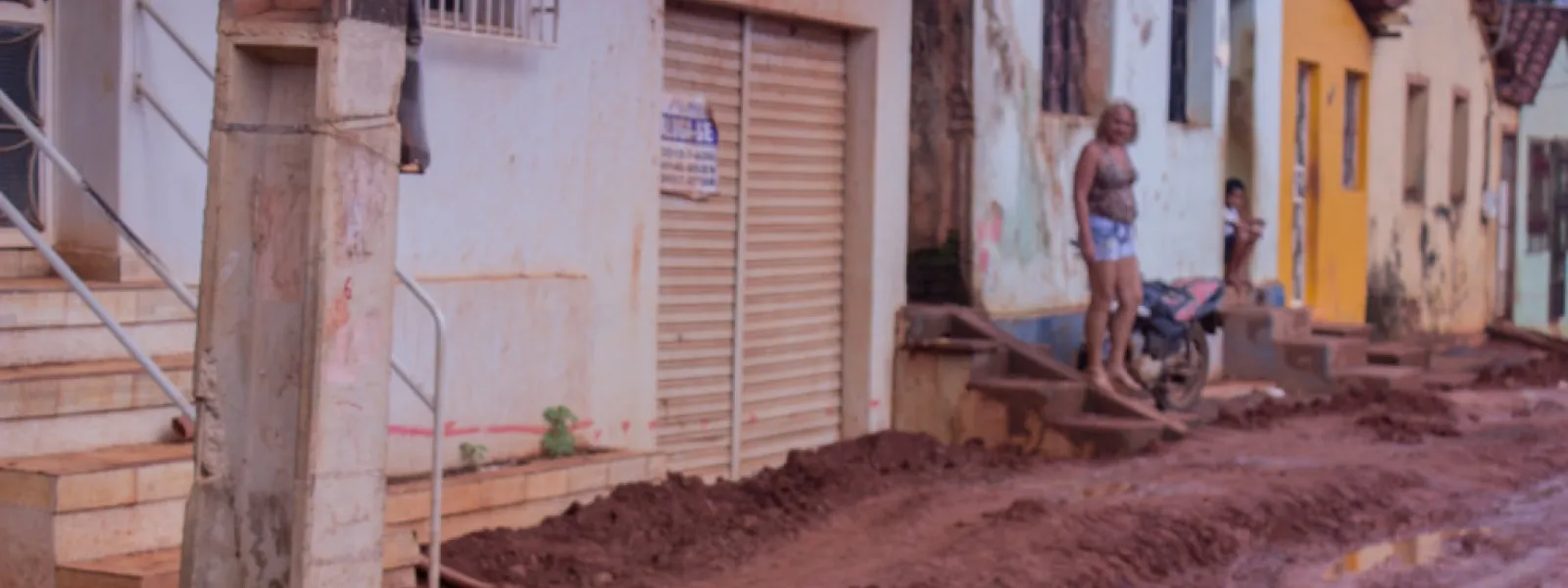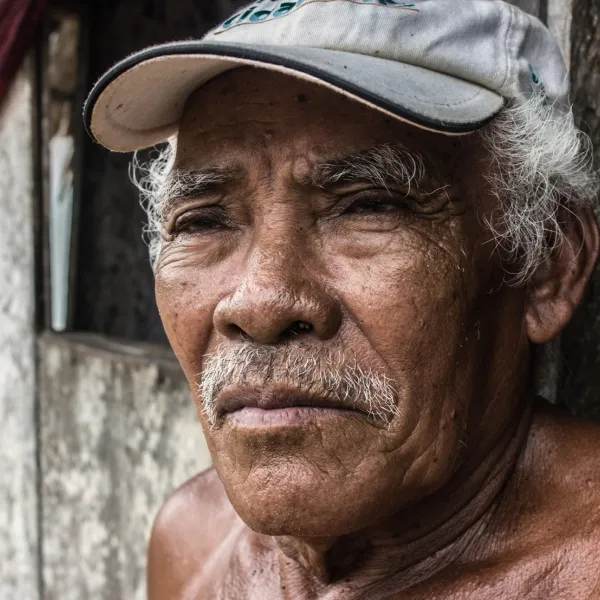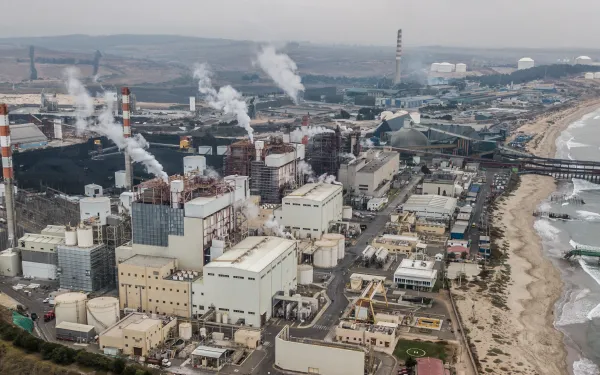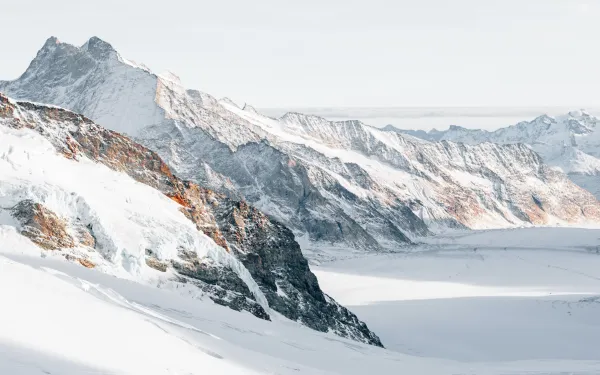
Project
Photo: Maíra Irigaray / Amazon WatchHolding Brazil accountable for the Belo Monte Dam
When fully operational, Belo Monte will be the third-largest dam in the world, constructed in one of the most important ecosystems on the planet: the Amazon rainforest. It sits on the Xingu River in Pará, a state in northern Brazil. The reservoir will cover 500 square kilometers of forest and farmland—an area the size of Chicago.
For the people of the Xingu, construction of Belo Monte has meant loss of access to water, food, housing, work and transportation. At least 20,000 people have been displaced.
The government and construction consortium began to construct the dam without first consulting the people of the region, many of whom are indigenous. They flouted international human rights law, which requires the free, prior and informed consent of affected indigenous communities. Brazil also failed to comply with precautionary measures issued by the Inter-American Human Rights Commission, which were intended to protect the life, health, and integrity of local communities.
Though Belo Monte began operations in May 2016, it is not yet operating at full capacity. In April 2016, a federal court suspended the dam's operating license because the consortium in charge did not complete basic sanitation works in Altamira, the city nearest to and most affected by the dam.
Partners:

Related projects

When the energy transition isn’t just: The case of Quintero and Puchuncaví in Chile
By Cristina Lux and Florencia Ortúzar * The energy transition in Chile will inevitably occur. In fact, it is already underway. The country doesn’t have large deposits of fossil fuels, but it does have abundant renewable energy resources. It only makes sense, then, that prior dependence on coal should naturally shift to the sun, wind and other renewable sources. Today, after decades of struggle by local communities, the closure of Chile’s original 28 coal-fired thermoelectric power plants is underway as part of the Decarbonization Plan promoted by the government in 2019. Eight have closed, six others have a future closure date, six more are in the process of establishing one, and eight do not yet have a closure plan. If the government and private actors deliver as promised, the thermoelectric plants as a whole should close before 2040, freeing Chile from the energy derived from burning coal. But the history of coal dependence will undoubtedly leave a deep mark. For many years, Chile obtained more than 50 percent of its energy from thermoelectric plants, all located in just five locations, known as "sacrifice zones." The people who live in those areas have long suffered at the expense of generating electricity for the rest of the country. The story of one of the most emblematic of Chile’s sacrifice zones, the bay of Quintero and Puchuncaví, demonstrates why the transition not only must occur, but why it has to be just. A beautiful seaside resort battered by pollution With a little more than 40 thousand inhabitants, the bay of Quintero and Puchuncaví is located two hours by road from the country's capital. The families there have historically lived from agriculture, artisanal fishing and tourism, ways of life that have been extinguished by the relentless advance of intensive industrial activity. Photo: Claudia Pool / @claudiapool_foto / www.claudiapool.com Today, the site is home to more than 30 different companies: a coal-fired thermoelectric complex, gas-fired thermoelectric plants, a copper refinery and a petroleum refinery, a regasification port, a cement plant, ports that receive coal and other fuels, as well as coal and ash storage centers, among others. Public information regarding the emissions of this mix of companies is deficient and the lack of regulations governing them is abysmal. In fact, only a few pollutants are regulated. The rest are not even measured, despite the fact that several are dangerous to human health. And so, paradoxically, the monitoring stations show normal levels as people are being intoxicated in the streets and schools. In the bay there are often mass poisonings of adults and youth, many of whom end up in the hospital. In these cases, schools are closed, but businesses are not, and the wind is monitored to activate protocols in case of poor ventilation. The blame is placed on the lack of wind instead of on those responsible for the pollution. It’s also common to see coal deposits on the beaches, which stain the sands. In 2022 alone, more than 100 episodes were recorded. It’s alarming how the situation affects local children, who are particularly vulnerable to pollution due to its effects on human development. The impact on women is also disproportionate, as they are the first to be forced to leave their jobs to care for sick family members since they bear the brunt of the care work. Things have not been done well in this beautiful coastal area. Today, new projects and the expansion of industrial operations continue to be approved. But the community is rising up, demanding a truce for this area. It is time to move towards ecological restoration in Quintero and Puchuncaví. Signs of hope Some recent events are giving hope that things could improve in the bay and that this area, which for years has been sacrificed in favor of the rest of the country, could once again show its beautiful beaches and wonderful fishing and agricultural resources to Chile and the world. Although the situation is not yet cause for celebration, some things seem to be moving in the right direction. One important step was the environmental damages lawsuit filed in 2016 by local communities against the government and all the companies in the industrial corridor. The process has been long, but a final judgment is expected soon. Meanwhile, in 2019, the Supreme Court resolved several appeals for protection for episodes of mass intoxications, giving reason to the communities and issuing a landmark ruling, perhaps the most important on environmental matters in Chile. The ruling orders the State to comply with 15 measures to identify the sources of contamination and repair the environmental situation in the area. Sadly, this ruling has not yet been properly implemented. Moving forward, the Supreme Court recently issued three rulings that refer to non-compliance with the 2019 ruling and provide tools to enforce compliance. Also, two of the four thermoelectric plants of the U.S.-owned AES Andes have closed operations in the bay. Two remain. Finally, in May, after 58 years of operation, the furnaces and boiler of the Ventanas Smelter were finally shut down. Thus, the icon of pollution in the area—a 158-meter chimney that consistently expelled pollutants—ceased to operate. The search for justice is far from over Despite the good signs, there is still no secure future for the people of Quintero and Puchuncaví. That’s why we must continue to demand justice and a transition that protects the most vulnerable people. Photo: Claudia Pool / @claudiapool_foto / www.claudiapool.com Although two of the four AES Andes thermoelectric plants operating in the bay have closed, the companies that owned them have been granted "strategic reserve status," whereby they are paid to remain available to operate again if required. On the other hand, although the copper smelter of the state-owned Corporación Nacional del Cobre closed, the refinery continues to operate in the area. There was a relocation plan for the workers, but no remediation plan for the communities that for almost six decades breathed the toxic waste of that industry. In addition, projects continue to be approved without the participation of the communities. This is the case of the Aconcagua desalination plant, which intends to desalinate water to transport it through subway pipes over 100 km to supply the Angloamerican mining company. Last but not least, decarbonization in Chile seems to bring an increase in the use of gas, which has been falsely labeled as a "transition fuel." It’s expected that gas activity in the area—which hosts one of the country's two LNG (liquefied natural gas) regasification ports—could intensify and, with it, so could its environmental impacts. Chile has the opportunity to set an example of just transition Chile, located at the end of the continent, has the opportunity to do things right. There are indications they’re moving in the right direction; the only thing missing is the political will to change course. The region of Quintero and Puchuncaví deserves the opportunity to shine again and to reach its full potential as a colorful coastal town and seaside resort with an identity rooted in agriculture, tourism and artisanal fishing. In this case, a truly just transition must include the closure of polluting companies that are making people sick. But it must also involve the participation of those people affected, putting the respect of their human rights at the forefront—a respect that was so diminished over the last six decades. The injustice that has weighed on the territory and its inhabitants must be recognized—establishing reparation mechanisms, ensuring non-repetition, and involving the people themselves in the environmental recovery of the area. Only in this way will the communities recover their capacity for agency—that power to decide and to be part of the decisions that affect them—which was taken away from them so many years ago. *Cristina Lux is an attorney with AIDA's Climate Program and Florencia Ortúzar is a senior attorney with AIDA.
Read more
Right to a healthy environment global coalition wins UN Human Rights Prize
Manila (PHP), Geneva (CH), Casablanca (MAR), New York (US), Mexico City (MX), Buenos Aires (ARG) — Today, the Global Coalition of Civil Society, Indigenous Peoples, Social Movements, and Local Communities for the Universal Recognition of the Human Right to a Clean, Healthy, and Sustainable Environment was recognized as one of the recipients of the prestigious 2023 United Nations Human Rights Prize. The coalition is awarded for its essential role in advocating for the recognition of the right to a healthy environment by the UN General Assembly (UNGA) in July 2022. The UN Human Rights Prize is awarded once every five years to several recipients at a time. This year is the first time that it has been granted to a global coalition. The prize will be presented in New York on December 10, which also marks the 75th anniversary of the Universal Declaration of Human Rights, making this recognition even more special. This achievement was only possible thanks to tireless efforts that began decades ago and resulted in thousands of people from all across the globe joining forces to achieve a milestone: the recognition by the United Nations of the human right to a clean, healthy, and sustainable environment. First and foremost, the award highlights the importance of collaborating to advance the much-needed protection of our planet and fulfillment of human rights. Alone, no organization, movement, or person would have been able to achieve the universal recognition of the right to a healthy environment. Together, a diverse global coalition made this a reality. Furthermore, the prize recognizes the need to protect participatory spaces for everyone. As civic spaces are worryingly shrinking and many human rights and environmental defenders are under attack worldwide, the award sends a strong reminder: It is essential to respect and strengthen spaces for participation and collaboration. The protection of civic spaces and the respect and support for all human rights defenders is essential for the effective implementation of this newly recognized right. The right also is an integral component of environmental justice and democracy and provides a seamless path to protecting the rights of future generations. This announcement arrives just a few days ahead of the July 28 anniversary of the UNGA’s recognition of the human right to a clean, healthy, and sustainable environment. Since then, millions have continued to experience the cumulative and accelerating impacts of the triple planetary crisis of biodiversity loss, climate change, and pollution, exacerbated by systemic inequalities, that is contributing to ongoing violations of the right to a healthy environment around the world. This prize emphasizes that today more than ever, States must make this right a reality. It is both a recognition and a call to action for governments, businesses, institutions, and people worldwide to ensure that the right to a clean, healthy, and sustainable environment is effectively guaranteed and legally protected so that it can be enjoyed by all. Read the reactions from the members of the coalition here. press contact: Víctor Quintanilla (Mexico), AIDA, [email protected], +521 5570522107
Read more
Climate finance: Questions and answers
The climate crisis knows no borders. It impacts people, ecosystems and species around the world. Addressing this global crisis requires profound and innovative transformations in all facets of human life: the production of energy, food and other goods; the design and construction of infrastructure; the use and management of terrestrial, marine and freshwater habitats; the transport of people and products; and more. These systemic changes demand financial resources and sound investments. This is why we hear time and again that addressing the climate crisis is costly and requires financing. Climate finance is a complicated topic, and so we offer you a glimpse of the basics. What do we mean by climate finance? The United Nations Framework Convention on Climate Change (UNFCCC) describes climate finance as the type of local, national or transnational finance used to support and implement climate change mitigation and adaptation actions with financial resources from public, private and alternative sources. These resources are defined as "new and additional" and cannot include those previously committed, for example, for official development assistance. To better understand this definition, we can point out that climate finance is captured and used to reduce greenhouse gas (GHG) emissions and enhance carbon sinks, or seeks to reduce vulnerability, as well as to maintain and increase the resilience of human and ecological systems to the negative effects of the climate crisis. Why is climate finance important? To echo UN Climate Change Executive Secretary Simon Stiell's message at the Sustainable Investment Forum, "We cannot achieve our climate goals without finance. Whether we are talking about transitioning to renewable energy, improving energy efficiency or protecting vulnerable communities from the effects of climate change, all of these efforts require significant investment." Climate finance impacts everything from national policies to changes occurring at the local level that make a concrete difference in people's lives. "Climate finance is ultimately about what we as societies value: the world we want to live in and the lives and hardships we can save by channeling our money into building resilience to the ravages of climate change," Stiell said in his speech. Financing by and for whom? The impacts of the climate crisis are inversely proportional to the weight of responsibility, in that the countries historically responsible for the highest levels of GHG emissions are often the least affected. This is why the UNFCCC advocates that developed countries, those with the most economic resources, should financially assist the least developed and most vulnerable countries. This is what the principle of "common but differentiated responsibilities and respective capabilities" established in the Convention is all about. On the other hand, the Paris Agreement—a legally binding international treaty in force since November 2016—reaffirms the obligation of developed countries in addition to promoting, for the first time, voluntary contributions from other States. It further provides that developed countries should continue to take the lead in mobilizing climate finance from a wide variety of sources, instruments and channels, taking into account the important role of public funds, as well as the needs and priorities of developing countries. It’s key to note that this mobilization of finance should represent a progression from previous efforts. What climate finance mechanisms exist? Under the UNFCCC, there are three main mechanisms for climate finance to reach nations, created for different purposes and with different scopes: Global Environment Facility (GEF): Grants financial resources to developing countries or countries with economies in transition to meet the objectives of international environmental conventions and agreements. It also manages the Special Climate Change Fund and the Least Developed Countries Fund. Adaptation Fund: Created as a financial instrument for adaptation and resilience in those countries that are part of the Kyoto Protocol. Green Climate Fund (GCF): Created with the objective of financing mitigation and adaptation programs and projects aimed at low-emission and climate-resilient development. It is the main multilateral climate finance entity worldwide. How much financing do we need? In the framework of the UN climate negotiations in 2009, developed countries committed to transfer $100 billion per year to developing countries by 2020 (target extended to 2025 in the Paris Agreement). But this amount has not been achieved. For example, in 2016 they only reached $58.5 billion and, although the amount increased significantly for 2019, they only reached $79.6 billion. In that sense, to meet the goal of net zero emissions by 2050, the Climate Policy Initiative organization estimates that global financing of $4.35 trillion is needed by 2030 (when the 2020 estimate was only $632 billion dollars). What are the main challenges of climate finance today? The main challenge, as we have seen, is the need for a substantial increase in the flow of finance. Another key challenge is to measure and track this type of finance, which is not subject to a common universal definition. Along the same lines, given that developed countries’ commitment to the UN does not include official guidelines on what activities count as climate finance, it’s difficult to ensure that money is not double-counted or that it goes to efforts that will actually help reduce global warming and its impacts. There is also the need to balance the allocation of funds more equitably between mitigation and adaptation activities, as well as those related to loss and damage already suffered by communities around the world. In 2020, 90 percent of global funding went to mitigation, while only 7 percent to adaptation projects and 3 percent to dual activities. On the other hand, it’s important that the financing channeled does not result in human or environmental impacts, as often happens when there are large investments in which adequate consultation and participation processes are not implemented. An energy project, however renewable and clean it may be, can accentuate inequalities and vulnerabilities if it is poorly planned or if it is designed without the participation of local communities. Finally, it should be considered that, although a lot of money is allocated to address the climate crisis, at the same time, businesses that promote dependence on fossil fuels, and that keep us in a predatory and unjust economic system that perpetuates extractivism as a mode of development, continue to increase around the world. This, of course, counteracts the progress we can make in favor of the environment and communities. What is clear is that a specific annual amount of climate finance is not enough; what we really need at this point is that all the money mobilized contributes to the regeneration of the planet and to resolving the environmental and climate crisis, not exacerbating it. At AIDA we monitor the climate finance coming to the region because we understand how important it is to increase the possibilities of building a future where we can live well and in harmony with the environment. We also understand that the problems often caused by poorly designed financing are due to a lack of connection between the territories that suffer the impacts of the climate crisis, and the decision-making spaces where projects are proposed to overcome them. In this sense, AIDA seeks to build a bridge between these two worlds, motivating organizations in the region to be active, to follow up on projects and to participate in decisions. Only in this way can we ensure that scarce climate funds not only exist, but also reach their full potential towards the paradigm shift we all need. Join the "Observatory of the Green Climate Fund for Latin America and the Caribbean", a joint effort to better monitor the world's largest climate fund.
Read more